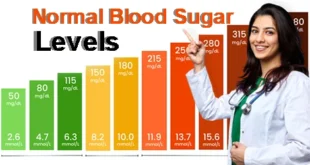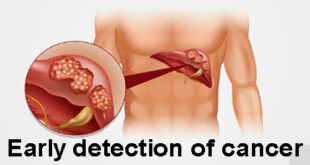Diabetes Symptoms and Causes
Diabetes Symptoms and Causes: Diabetes is a chronic medical condition that affects how your body turns food into energy. When you eat, your body breaks down carbohydrates into glucose (a type of sugar), which enters your bloodstream. Normally, your pancreas releases a hormone called insulin to help glucose enter your cells, where it’s used for energy.
In diabetes, the body either doesn’t produce enough insulin or can’t use it effectively, leading to high levels of glucose in the blood. Over time, this excess sugar can cause damage to various organs and tissues, leading to complications.
Types of Diabetes
What are the types of diabetes? Let’s know the details about that. Managing diabetes involves lifestyle changes, monitoring blood sugar levels, medication (like insulin or oral drugs), and sometimes, weight management.
There are three main types of diabetes:
Type 1 Diabetes
- Cause: Type 1 diabetes is an autoimmune condition where the immune system attacks and destroys the insulin-producing beta cells in the pancreas.
- Characteristics: The body produces little to no insulin, making daily insulin injections or an insulin pump necessary for survival.
- Onset: It typically develops in childhood or adolescence but can occur at any age.
- Symptoms: Often appear suddenly and may include extreme thirst, frequent urination, rapid weight loss, and fatigue.
- Management: In addition to insulin therapy, careful monitoring of blood glucose, a balanced diet, and physical activity are essential.
Type 2 Diabetes
- Cause: This type develops when the body becomes resistant to insulin or the pancreas doesn’t produce enough insulin to keep blood glucose levels in check.
- Characteristics: Type 2 diabetes is often associated with lifestyle factors, including poor diet, inactivity, and being overweight, but genetics also play a role.
- Onset: More common in adults over 45 but increasingly seen in younger individuals, including children.
- Symptoms: Usually develop gradually and include fatigue, frequent urination, increased thirst, and blurred vision.
- Management: It can often be managed with lifestyle changes, such as a healthy diet, weight loss, and regular exercise. Medication or insulin therapy may also be required.
Gestational Diabetes
- Cause: Gestational diabetes occurs when hormonal changes during pregnancy make the body less responsive to insulin.
- Characteristics: It develops only during pregnancy and usually resolves after childbirth but can increase the risk of type 2 diabetes later in life for both mother and child.
- Onset: Typically diagnosed in the second or third trimester of pregnancy.
- Symptoms: Often doesn’t produce noticeable symptoms, so pregnant women are routinely tested.
- Management: Often controlled with diet and exercise, though some women may need insulin or oral medications.
Other Types and Conditions Related to Diabetes:
Prediabetes: Blood sugar levels are higher than normal but not yet high enough for a diabetes diagnosis. Lifestyle changes can often prevent its progression to type 2 diabetes.
MODY (Maturity-Onset Diabetes of the Young): A rare, genetic form of diabetes that typically emerges in adolescence or early adulthood.
LADA (Latent Autoimmune Diabetes in Adults): Sometimes called type 1.5 diabetes, LADA is a slower-progressing form of type 1 diabetes that appears in adulthood.
Each type of diabetes requires specific approaches to management and treatment to help prevent complications and maintain a healthy lifestyle.
What are the most common symptoms?
The most common symptoms of diabetes, especially in the early stages, include:
- Frequent Urination (Polyuria)
- Increased Thirst (Polydipsia)
- Unexplained Weight Loss
- Fatigue
- Blurred Vision
These are often the first symptoms people notice, and they’re key indicators for both type 1 and type 2 diabetes. In type 1 diabetes, symptoms can develop suddenly, while in type 2 diabetes, they might appear more gradually and be less noticeable at first.
What causes these symptoms?
The symptoms of diabetes are caused by high blood sugar levels, which result from either insufficient insulin production (type 1 diabetes) or the body’s inability to effectively use insulin (type 2 diabetes). Here’s a breakdown of how high blood sugar impacts the body and leads to common symptoms:
1. Frequent Urination and Increased Thirst
High blood sugar forces the kidneys to work overtime to filter and expel the excess glucose through urine. This increases urine output, which also leads to dehydration, making you feel constantly thirsty.
2. Fatigue
Glucose is the main source of energy for your body’s cells. When cells can’t access it (due to low insulin or insulin resistance), the body lacks usable energy, leading to persistent tiredness and weakness.
3. Increased Hunger
Because cells aren’t getting the glucose they need for energy, your body signals hunger in an attempt to increase energy intake, even though blood sugar levels are already high.
4. Unexplained Weight Loss
In type 1 diabetes especially, the body breaks down muscle and fat for energy when it can’t use glucose. This can lead to rapid, unexplained weight loss despite increased hunger.
5. Blurred Vision
High blood sugar causes fluid shifts, including in the lens of the eye, affecting its shape and flexibility. This makes it difficult to focus properly, resulting in blurred vision.
6. Tingling or Numbness in Hands and Feet
High blood sugar can damage small blood vessels and nerves, especially in the extremities, leading to a tingling or numb sensation known as diabetic neuropathy.
7. Slow-Healing Cuts and Frequent Infections
High blood sugar impairs immune function and circulation, which can slow down wound healing and increase the risk of infections. This is why people with diabetes often experience infections in areas like the gums, skin, and urinary tract.
8. Darkened Skin Patches (Acanthosis Nigricans)
Insulin resistance, common in type 2 diabetes, can lead to skin changes, particularly dark patches in areas like the neck, armpits, and groin.
These symptoms collectively arise because high blood sugar disrupts normal cellular processes, making it hard for the body to function effectively. Identifying and managing blood sugar levels early can help prevent further complications.
Diabetes risk factors
Several risk factors increase the likelihood of developing diabetes, particularly type 2 diabetes. Here’s an overview:
- Family History
Having a parent or sibling with diabetes significantly increases your risk, as genetics play a role.
- Age
The risk of type 2 diabetes rises as you get older, especially after age 45. This is partly due to reduced physical activity, muscle mass, and changes in metabolism over time.
- Weight and Body Fat
Being overweight, especially if you carry extra weight around the abdomen, increases insulin resistance and raises the risk of type 2 diabetes.
- Sedentary Lifestyle
Lack of physical activity contributes to weight gain and reduces your body’s ability to use insulin effectively. Regular exercise helps control weight, improve blood sugar levels, and make your cells more insulin-sensitive.
- Poor Diet
A diet high in processed foods, sugary drinks, and unhealthy fats can increase weight and blood sugar levels, raising your risk of diabetes.
- High Blood Pressure and Cholesterol Levels
High blood pressure (above 140/90 mm Hg) and abnormal cholesterol or triglyceride levels increase the risk of insulin resistance and type 2 diabetes.
- History of Gestational Diabetes
Women who developed diabetes during pregnancy (gestational diabetes) are at higher risk of developing type 2 diabetes later in life.
- Polycystic Ovary Syndrome (PCOS)
PCOS, which is linked to insulin resistance, can increase the risk of type 2 diabetes.
- Ethnicity
People from certain ethnic backgrounds, including African American, Hispanic, Native American, Asian American, and Pacific Islander groups, have a higher risk of developing type 2 diabetes.
- Prediabetes
Prediabetes is a condition where blood sugar levels are higher than normal but not high enough for a diabetes diagnosis. Without intervention, prediabetes can progress to type 2 diabetes.
- History of Cardiovascular Disease
People with a history of cardiovascular disease are at greater risk of developing type 2 diabetes, as both conditions share common risk factors like obesity and high blood pressure.
If you have one or more of these risk factors, regular screening for diabetes can help with early detection and prevention. Lifestyle changes, such as diet improvements and increased physical activity, can help reduce risk even if you’re predisposed.
Conclusion
Diabetes Symptoms and Causes: If you experience severe symptoms like confusion, shortness of breath, abdominal pain, or a fruity smell on your breath, it could indicate a serious complication like diabetic ketoacidosis (DKA), which requires immediate medical attention.
Early testing and diagnosis allow for better management and help prevent complications from developing. If you’re unsure, it’s always a good idea to consult a healthcare professional to discuss your symptoms or risk factors.










